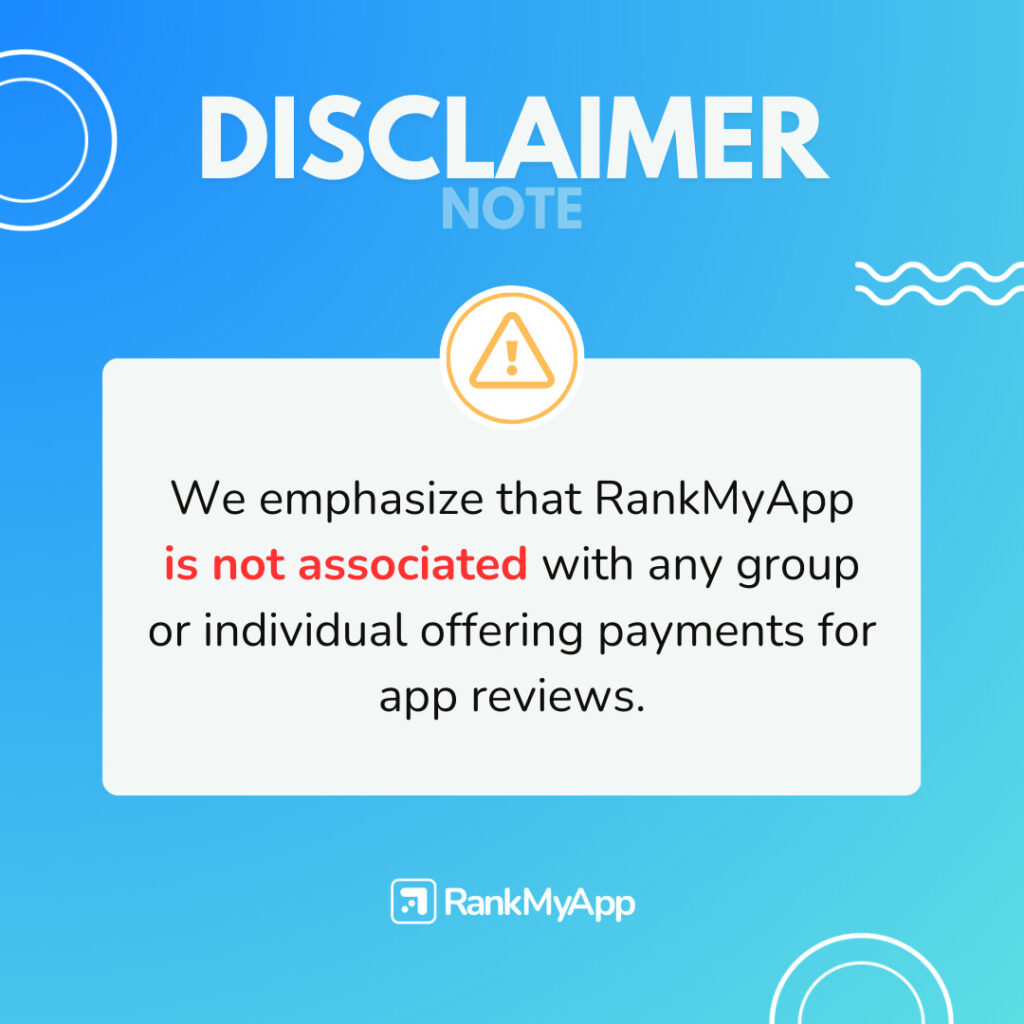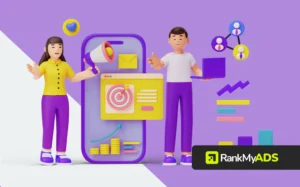First of all, do you know what CPI Campaigns are? Many people are not very familiar with them, and we are here to give you a hand to launch successful CPI campaigns. In CPI campaigns (Cost-per-Install), publishers place an ad to push app installations and that is what we will cover in this article.
Essentially, marketers only have to pay when apps are installed by users that clicked on their ads and it is not that difficult to comprehend how CPI differentiates from other performance-based models for apps promotion.
An install is made by a new user, which can be tracked by a third-party tracking system. Then, the marketer pays for this conversion. Got it?
Even though the cost per install is a great kind of mobile advertising to ensure downloads, it can also be helpful for attracting highly engaged users as it can be targeted to the right people. With this kind of audience, it is possible to build a long-term relationship and ultimately increase profits.

Understanding CPI Marketing
Cost Per Install (CPI) marketing serves as a cornerstone in the arsenal of mobile app advertisers, providing a direct pathway to app acquisition success. In this dynamic advertising model, advertisers allocate budgets specifically toward achieving app installations, ensuring that every expenditure directly correlates with tangible user actions. Unlike traditional models where clicks or impressions may not translate into concrete outcomes, CPI marketing offers a clear and measurable return on investment (ROI) by focusing solely on the end result: app installs. This precision in payment structure empowers advertisers to optimize their campaigns efficiently, directing resources toward channels and strategies that deliver the highest conversion rates and ultimately drive app growth.
Furthermore, CPI marketing fosters a symbiotic relationship between advertisers and app publishers, creating a mutually beneficial ecosystem for app promotion. Advertisers leverage CPI campaigns to expand their app’s reach and attract new users, while app publishers monetize their inventory by hosting relevant app install ads. This collaborative partnership incentivizes publishers to showcase advertisers’ apps to their audience, driving app installs and revenue generation for both parties involved. As a result, CPI marketing emerges as a powerful catalyst for app discovery and adoption, facilitating seamless connections between app developers, advertisers, and consumers in the bustling mobile app marketplace.

Key Components of CPI Campaigns
Target Audience Identification
One of the fundamental aspects of setting up a successful CPI campaign is identifying and targeting the right audience segments. Conducting thorough market research to understand your target audience’s demographics, interests, and behaviors is essential. Leveraging audience segmentation tools and data analytics can help you create highly targeted campaigns that resonate with your ideal users. By targeting the right audience, you can maximize the effectiveness of your CPI campaigns and drive higher-quality app installations.
Compelling Ad Creatives
Creating compelling ad creatives is crucial for capturing users’ attention and driving app installations. Your ad creatives should be visually appealing, engaging, and clearly communicate the value proposition of your app. Use high-quality images, compelling copywriting, and strong calls-to-action to entice users to install your app. A/B testing different ad creatives can help you identify which ones perform best with your target audience and optimize your campaign accordingly.

How to optimize your mobile marketing strategy with CPI
1- Target the right audience
Approximately, there are more than 4 million applications available for Android and IOS. It turns out that targeting the right people is crucial to guarantee how successful your campaign is going to be.
What should you do then? We strongly suggest that you start by focusing on users you know that have downloaded apps with similar features to yours or if they are related somehow.
For instance, you are advertising a running app. Then you should target people who have already installed some sort of wellness apps, such as MyFitnessPal or WaterMinder. See what we mean?
In addition to that, there are several tools out there that allow you to target app audiences according to the apps they have installed on their phones.
2- Optimize post-install actions
Installs are easy to be tracked, scalable and a channel directly attached to users. An install itself is great from a certain point of view but engagement is what really makes the difference because highly engaged users provide value to your company.
Let’s say you own an app that sells women clothes. How many searches show that a user may be considering to make a purchase anytime soon? That is an example of what an important action post-install can look like and it also can be a sign that a quality user has been found. This way, you can actively optimize your CPI campaign by targeting users who are more inclined to complete the desired action.

You can actively optimize your CPI campaign by targeting users who are more inclined to complete the desired action.
3- Focus on income
If your app does not charge anything to be downloaded and relies on in-app transactions to make money, it means a simple download will not be enough for your application to get a return on investment. We definitely recommend that you target the right audience. What does that mean?
Basically, it means that users brought to your app should make their first purchase or spend a certain amount of money. Remember, it is important to choose a platform that can provide different metrics to track payouts, in order to make the right adjustments when necessary and optimize your campaign to generate revenue.
4- Optimized Landing Pages
Optimizing your app’s landing pages is essential for converting ad clicks into app installations. Ensure that your landing pages are optimized for conversions by providing clear and concise information about your app’s features, benefits, and value proposition. Include prominent app store download buttons and social proof elements such as user reviews and ratings to build trust and credibility with potential users. Continuously test and refine your landing pages to improve conversion rates and maximize the effectiveness of your CPI campaigns.
5- Continuous Monitoring and Optimization
Monitoring the performance of your CPI campaigns in real-time is crucial for optimizing campaign performance and maximizing ROI. Track key metrics such as CPI, conversion rate, and retention rate to identify areas for improvement and make data-driven decisions. Continuously optimize your targeting, ad creatives, and bidding strategies based on performance data to ensure that your CPI campaigns are delivering the desired results.

Leveraging CPI App Marketing Offers
Exploring Mobile Ad Networks
Partnering with reputable mobile ad networks that offer CPI app marketing campaigns is essential for reaching your target audience effectively. Mobile ad networks provide access to a vast network of publishers and app inventory, allowing you to reach users across various channels and platforms. Evaluate different mobile ad networks based on their reach, targeting capabilities, and pricing models to find the best fit for your CPI campaigns.
Negotiating CPI Rates
Negotiating competitive CPI rates with ad networks and publishers can help you maximize the effectiveness of your CPI campaigns and stretch your marketing budget further. Work closely with your account manager to negotiate favorable rates based on factors such as campaign volume, targeting specificity, and performance goals. By securing competitive CPI rates, you can drive more app installations while optimizing your campaign’s ROI.

Is CPI the Best Choice for Campaigns?
In the ever-evolving landscape of digital marketing, advertisers are constantly seeking the most effective and efficient ways to promote their products and services. One advertising model that has gained considerable traction in recent years is Cost Per Install (CPI) campaigns. But is CPI truly the best choice for campaigns? Let’s delve into the advantages of CPI and explore why it’s a favored option for many advertisers.
Advantages of CPI Campaigns
- Measurable Results: One of the key advantages of CPI campaigns is the ability to measure results accurately. With CPI, advertisers only pay when users install their app, providing a clear and tangible metric for success. This level of transparency allows advertisers to track the ROI of their campaigns more effectively and make data-driven decisions to optimize performance.
- Cost-Efficiency: CPI campaigns are highly cost-effective, especially for app developers looking to acquire new users. By paying only for each app installation, advertisers can ensure that their marketing budget is allocated efficiently, with no wasted spend on clicks or impressions that may not lead to conversions. This cost-efficiency makes CPI campaigns an attractive option for advertisers of all sizes, from startups to enterprise-level businesses.
- Targeted Audience Reach: With CPI campaigns, advertisers can reach a highly targeted audience of users who are actively interested in downloading and trying new apps. By leveraging data-driven targeting options, such as demographics, interests, and behaviors, advertisers can ensure that their ads are served to the most relevant audience segments, increasing the likelihood of app installations and driving higher-quality user acquisition.
- Scalability: CPI campaigns offer scalability, allowing advertisers to scale their campaigns according to their budget and goals. Whether advertisers are looking to drive a small number of app installations or launch a large-scale user acquisition campaign, CPI provides the flexibility to adjust campaign parameters and optimize performance accordingly.
- Optimized for App Stores: Since CPI campaigns are specifically designed to drive app installations, they are optimized for app store environments. Ad creatives and landing pages can be tailored to align with app store guidelines and best practices, ensuring that ads resonate with users and drive conversions effectively.
- Performance-Based Pricing: CPI campaigns align with a performance-based pricing model, wherein advertisers only pay when a user completes the desired action of installing the app. This pay-for-performance structure ensures that advertisers are only investing in tangible results, mitigating the risk of spending on ineffective advertising channels.
- App Store Optimization (ASO) Integration: CPI campaigns often work hand-in-hand with App Store Optimization (ASO) strategies. By driving app installations through CPI campaigns, advertisers can boost their app’s visibility and improve its rankings in app store search results. This synergy between CPI campaigns and ASO can lead to enhanced organic discovery and long-term app success.
- User Engagement and Retention: While CPI campaigns focus on acquiring new users, they also present opportunities for engaging and retaining existing users. By targeting users who are likely to be interested in the app’s features and functionalities, CPI campaigns can drive higher levels of user engagement and increase retention rates over time.
- Incentivized Installs: Some CPI campaigns leverage incentivized installs, where users are rewarded for downloading and installing the app. While incentivized installs may result in higher install volumes, advertisers should carefully consider the quality of these installs and their long-term impact on user engagement and retention.
- Global Reach: CPI campaigns offer advertisers the opportunity to reach users on a global scale. With the ability to target users based on geographic location, language preferences, and other demographic factors, CPI campaigns enable advertisers to expand their app’s reach and tap into new markets around the world.
In conclusion, while CPI may not be the best choice for every campaign, its advantages make it a highly valuable option for advertisers looking to promote their apps and drive user acquisition. With measurable results, cost-efficiency, targeted audience reach, scalability, and optimization for app stores, CPI campaigns offer a compelling solution for advertisers seeking to maximize the impact of their marketing efforts in the competitive app marketplace.

Conclusion
To sum up, CPI campaigns enable you to achieve several goals, like increasing the number of installs, growing the number of active users who perform desired actions, boosting app ranking on the app stores and definitely generating revenue.
We hope this article helps you out on launching your cost per install campaign in a successful way. If you have any doubts regarding this subject or any suggestions, our specialists will be glad to hear from you.
In conclusion, setting up successful CPI campaigns requires a strategic approach, thorough planning, and continuous optimization. By understanding the key components of CPI marketing, identifying your target audience, creating compelling ad creatives, optimizing your landing pages, and leveraging CPI app marketing offers, you can maximize the effectiveness of your CPI campaigns and drive meaningful results for your app. As the mobile app landscape continues to evolve, CPI marketing remains a valuable tool for app developers and marketers seeking to acquire new users and grow their app businesses.
RankMyApp and App Marketing Campaigns
For companies looking to launch successful app marketing campaigns and optimize their CPI efforts, RankMyApp offers a comprehensive suite of ASO and mobile marketing services. With expertise in CPI campaigns and app promotion strategies, RankMyApp can help businesses maximize their app visibility, attract high-quality users, and drive app growth effectively. Partnering with RankMyApp ensures that your app marketing campaigns are optimized for success, leading to increased app downloads and improved ROI.





